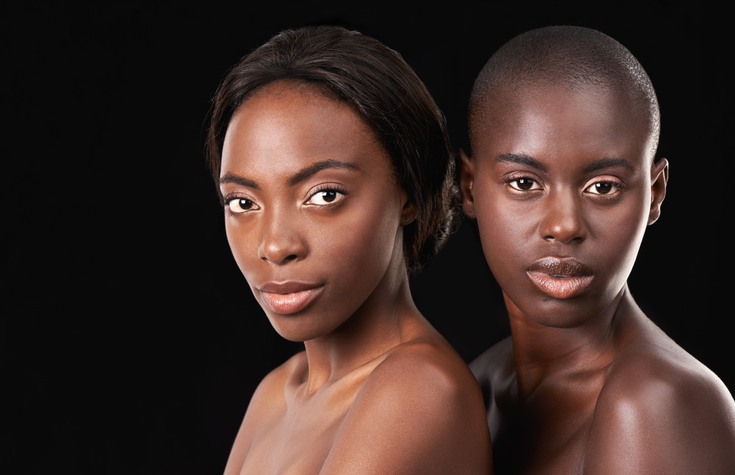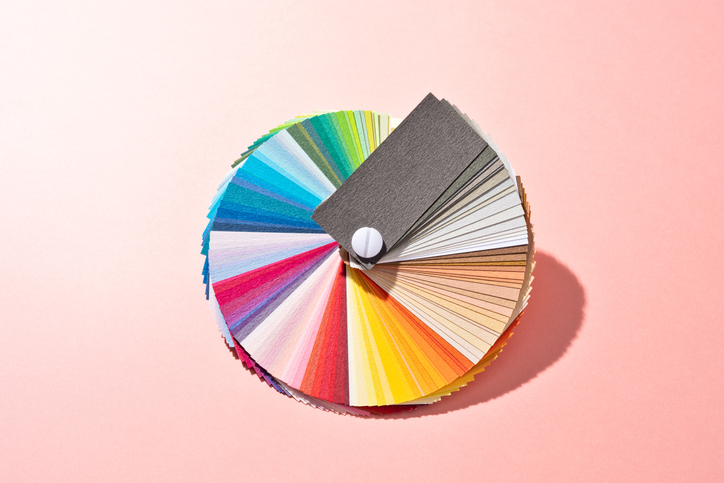Ways Parents Cultivate Anti-Blackness And Self-Hate In Black Children
Subtle And Not-So-Subtle Ways Parents Cultivate Anti-Blackness And Self-Hate In Children
Share the post
Share this link via
Or copy link

Source: kate_sept2004 / Getty
As parents of Black children, we often wonder how we can shield them from the harsh realities of the outside world– one of the primary ones being racism. Sadly, this worry and wonder, while natural, is generally wasted energy. It is virtually impossible to safeguard our kids from an institution upon which this nation was founded; one that is still very much ingrained in our society. But while we’re incapable of controlling the outside world and the actions of others, we are very much in control of how we respond to our kids, how we interact with others, what we expose them to, and the examples that we set for them.
“Our research revealed that parents are powerful vehicles of ethnic prejudice transmission towards their children,” Giuseppe Carrus of Roma Tre University in Italy told Fatherly of a study he co-authored on how parents’ subtle ethnic prejudices predict children’s implicit prejudice in Europe. “Not only through their explicit communications and actions, but also through their unaware and unconscious beliefs, stereotypes and automatic behaviors.”
As Metro UK points out, “anti-Blackness is the name for the specific kind of racial prejudice directed towards Black people.” And sadly, anti-Blackness is not only perpetuated by people of other races. It is so much a part of our society that many of us, either through our upbringing or personal experiences, have internalized anti-Black philosophies and, perhaps, even projected them onto others. In other words, parents can knowingly and unknowingly project their self-hating biases onto their children. Here’s how.

Source: SDI Productions / Getty
Telling them they’re too dark for something
Love MadameNoire? Get more! Join the MadameNoire Newsletter
We care about your data. See our privacy policy.
There is no such thing as being too dark to wear a particular color. Sadly, many children and adults of darker hues have been convinced that their complexions render them incapable of wearing certain colors, usually brighter ones when it comes to their clothes and makeup. I vividly remember religiously avoiding yellows, oranges, and other bright colors as a teen because of messages that were sent to me growing up.

Source: mapodile / Getty
Limiting their time outdoors because they’ll get “too black”
Speaking of limitations, another problematic restraint often placed on Black children has to do with the amount of time that they spend outdoors. Parents or older loved ones will tell that they need to get out of the sun, less they will get “too dark.” Of course, this sends the message that being dark is a negative thing and something that should be avoided.

Source: SDI Productions / Getty
Fetishizing children because they’re mixed
All children are beautiful, but as we’ve seen on social media and elsewhere, a great number of people fetishize children who are bi-racial. You will often hear them blurting out comments such as, “You know that baby is going to be beautiful because she’s mixed.” Kids notice this type of behavior and they internalize the harmful messaging that it sends.

Source: Eva Ozkoidi / EyeEm / Getty
Using the term “good hair” when referencing texture
Although many of us have left this term in 2010, there are still people who refer to looser hair textures as “good hair,” which by default pegs kinkier textures as bad or undesirable. This can be particularly damaging to the self-esteem of Black girls. Healthy hair is good hair.

Source: kate_sept2004 / Getty
Acting as though their hair is unmanageable in its natural state
Caring for a child’s hair on top of your own can be a lot of work, but it’s part of raising a little girl. Sadly, many Black girls often receive the messaging that their hair is unmanageable and too much deal with from the women in their lives, mainly their mothers. While caring for their hair may require more time, money, and effort, they don’t need to be constantly reminded of this.

Source: Robert Kneschke / EyeEm / Getty
Making them the only Black child in every setting
When a child is the only Black kid in every setting, from school to extracurricular activities, it can wreak havoc on their self-esteem and confidence. Black children, like other children, should be exposed to people of other races, but it should not be a rare occurrence for them to also be in the presence of other kids who look like them.

Source: Shannon Fagan / Getty
Showing preferential treatment to children based on skin tone
Internalized oppression can be passed down from generation to generation, which is why it’s not uncommon to see parents, grandparents, aunts, and uncles show preferential treatment to the children in their lives based on skin tone. In many cases, this is not a conscious decision, which is why it’s so important for the caretakers of Black children to check their own biases and explore the ways in which they may have internalized anti-Blackness.

Source: PeopleImages / Getty
Making disparaging comments about other Black people’s complexions
Speaking of internalized oppression, it is also important for parents to mindful of what they say about other people because children are like sponges. Making negative comments about another Black person based on their complexion will only serve to perpetuate colorist ideas within children.

Source: MirageC / Getty
Using a value system that is based on proximity to whiteness
We all know Black people who only consider a neighborhood to be “nice” if it is predominately white and only believes that a school is “good” if the majority of students are non-black. Sadly, this twisted value system often passed down from one generation to the next, slowly crushing the self-esteem of Black children in the process.






